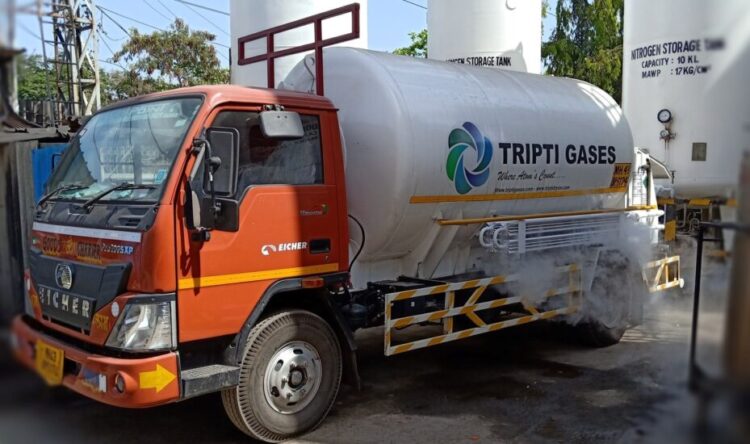
Liquid nitrogen is inert, colorless, odorless, noncorrosive, nonflammable, and extremely cold. Nitrogen makes up the major portion of the atmosphere (78.03% by volume, 75.5% by weight). Nitrogen is inert and will not support combustion; however, it is not life-supporting.
Although used more commonly in the gaseous state, nitrogen is commonly stored and transported as a liquid, affording a more cost-effective way of providing product supply. Liquid nitrogen is a cryogenic liquid. Cryogenic liquids are liquefied gases that have a normal boiling point below –130°F (–90°C). Liquid nitrogen has a boiling point of –320°F (–196°C). The temperature difference between the product and the surrounding environment, even in winter, is substantial. Keeping this surrounding heat from the product requires special equipment to store and handle cryogenic liquids. A typical system consists of the following components: a cryogenic storage tank, one or more vaporizers, and a pressure and temperature control system. The cryogenic tank is constructed like, in principle, a vacuum bottle. It is designed to keep heat away from the liquid that is contained in the inner vessel. Vaporizers convert the liquid nitrogen to its gaseous state. A pressure control manifold controls the pressure at which the gas is fed to the process. Processes that use nitrogen as a liquid do not require the vaporizers and pressure control manifold
| Product | Capacity | Low Pressure |
|---|---|---|
| LIQUID NITROGEN (LIN) | 5 Metric Ton & 10 Metic Ton | 3 kg/cm2 |